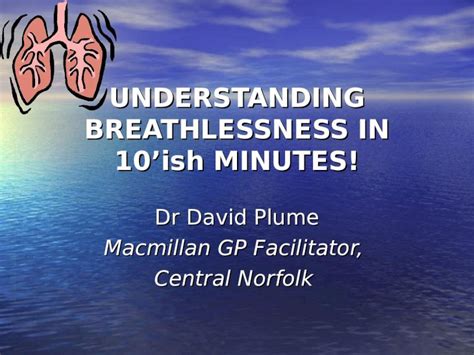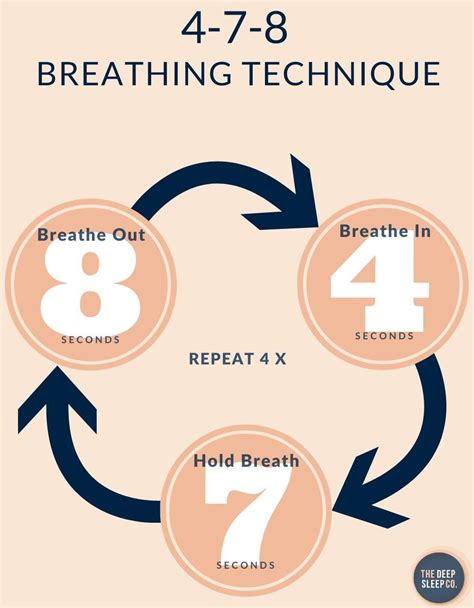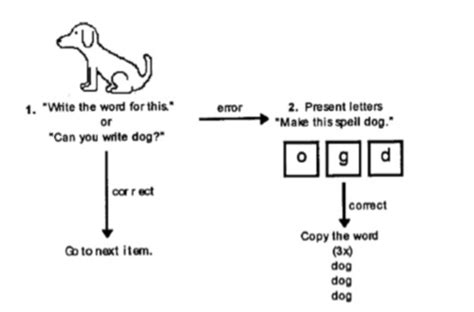Intro
Breathlessness, also known as dyspnea, is a common symptom that can be caused by a variety of factors, including respiratory problems, heart conditions, and anxiety. It can be a frightening and debilitating experience, making everyday activities a challenge. However, there are several ways to manage and alleviate breathlessness, improving overall quality of life. In this article, we will explore five effective methods to stop breathlessness, providing readers with practical tips and techniques to regain control over their breathing.
Breathlessness can be acute or chronic, and its severity can vary from mild to severe. It is essential to identify the underlying cause of breathlessness to develop an effective treatment plan. Some common causes of breathlessness include asthma, chronic obstructive pulmonary disease (COPD), pneumonia, heart failure, and anxiety disorders. Regardless of the cause, learning how to manage breathlessness is crucial to maintaining independence and enjoying daily activities.
Managing breathlessness requires a comprehensive approach that incorporates lifestyle changes, breathing techniques, and medical treatments. By understanding the underlying causes of breathlessness and implementing effective strategies, individuals can reduce their symptoms and improve their overall health. In the following sections, we will delve into five ways to stop breathlessness, providing readers with a comprehensive guide to managing this debilitating symptom.
Understanding Breathlessness

Diagnosing Breathlessness
Diagnosing breathlessness requires a comprehensive medical evaluation, including a physical examination, medical history, and diagnostic tests. Some common diagnostic tests used to evaluate breathlessness include: * Pulmonary function tests (PFTs) to assess lung function * Chest X-rays and computed tomography (CT) scans to evaluate lung structure * Electrocardiograms (ECGs) and echocardiograms to assess heart function * Blood tests to evaluate oxygen levels and detect underlying medical conditionsMethod 1: Breathing Techniques

Benefits of Breathing Techniques
Breathing techniques offer several benefits, including: * Reduced breathlessness and improved lung function * Increased oxygen levels and reduced fatigue * Improved sleep quality and reduced stress * Enhanced overall well-being and quality of lifeMethod 2: Exercise and Physical Activity

Types of Exercise
There are several types of exercise that can help manage breathlessness, including: * Aerobic exercise, such as walking, cycling, and swimming * Strength training, such as weightlifting and resistance band exercises * Flexibility exercises, such as yoga and Pilates * Breathing exercises, such as diaphragmatic breathing and pursed-lip breathingMethod 3: Stress Management

Benefits of Stress Management
Stress management offers several benefits, including: * Reduced stress and anxiety * Improved sleep quality * Enhanced overall well-being and quality of life * Increased ability to manage breathlessness and other symptomsMethod 4: Medications and Treatments

Types of Medications
There are several types of medications that can help manage breathlessness, including: * Bronchodilators, which help open airways and improve breathing * Anti-inflammatory medications, which reduce inflammation and improve lung function * Oxygen therapy, which provides supplemental oxygen to reduce breathlessness * Medications, such as antibiotics and antivirals, to treat underlying infectionsMethod 5: Lifestyle Changes

Benefits of Lifestyle Changes
Lifestyle changes offer several benefits, including: * Improved overall health and well-being * Reduced risk of chronic diseases, such as heart disease and diabetes * Improved lung function and reduced breathlessness * Enhanced quality of life and increased independenceWhat are the common causes of breathlessness?
+Breathlessness can be caused by a variety of factors, including respiratory problems, heart conditions, and anxiety. Some common causes of breathlessness include asthma, COPD, pneumonia, heart failure, and anxiety disorders.
How can I manage breathlessness?
+Managing breathlessness requires a comprehensive approach that incorporates lifestyle changes, breathing techniques, and medical treatments. Some effective strategies include practicing diaphragmatic breathing, exercising regularly, and managing stress.
What are the benefits of breathing techniques?
+Breathing techniques offer several benefits, including reduced breathlessness, improved lung function, and enhanced overall well-being. Some common breathing techniques used to alleviate breathlessness include diaphragmatic breathing, pursed-lip breathing, and box breathing.
In conclusion, managing breathlessness requires a comprehensive approach that incorporates lifestyle changes, breathing techniques, and medical treatments. By understanding the underlying causes of breathlessness and implementing effective strategies, individuals can reduce their symptoms and improve their overall health. We encourage readers to share their experiences and tips for managing breathlessness in the comments below, and to explore our other articles on respiratory health and wellness. By working together, we can improve our understanding of breathlessness and develop effective strategies for managing this debilitating symptom.
